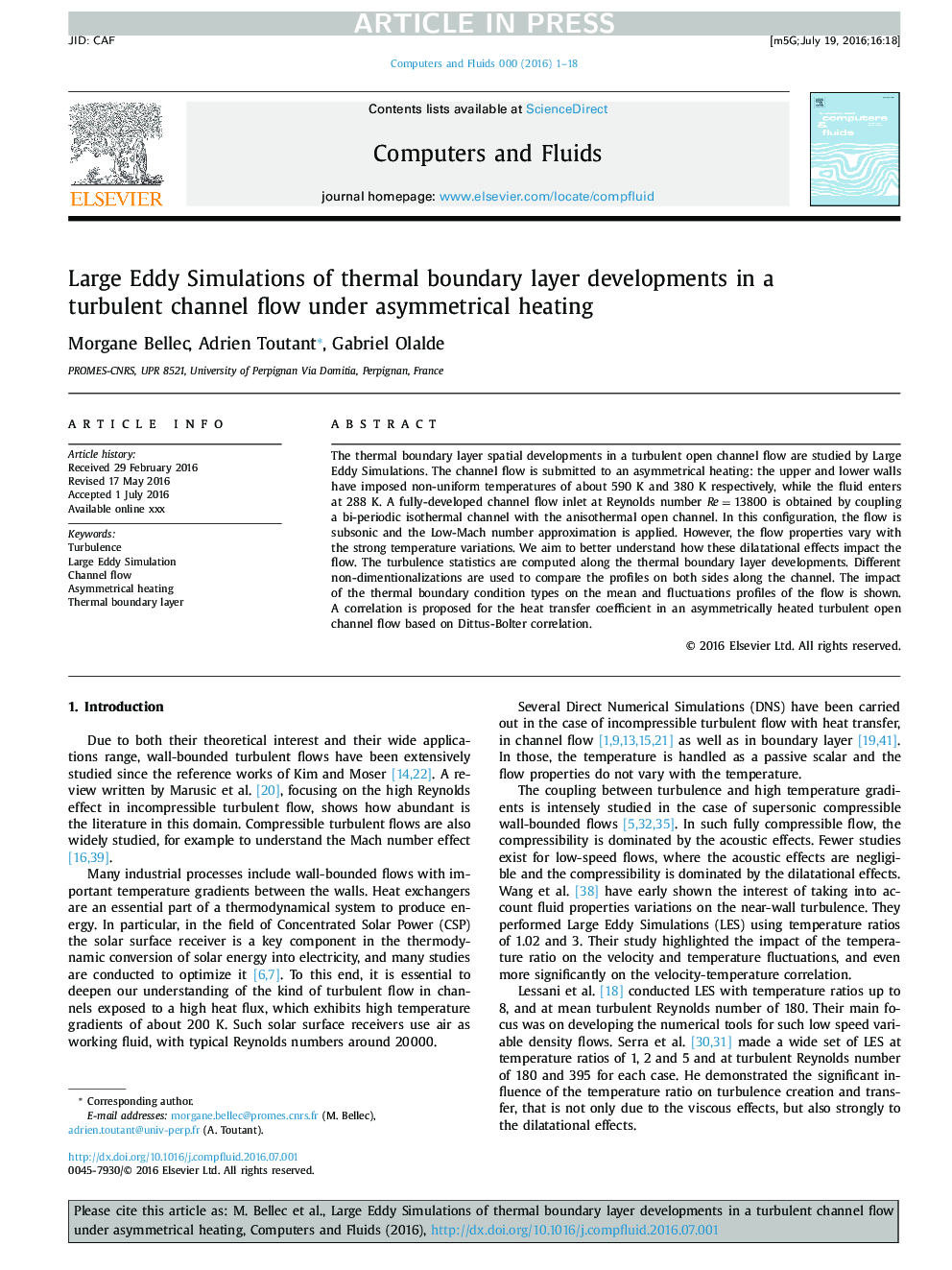| Article ID | Journal | Published Year | Pages | File Type |
|---|---|---|---|---|
| 5011846 | Computers & Fluids | 2017 | 18 Pages |
Abstract
The thermal boundary layer spatial developments in a turbulent open channel flow are studied by Large Eddy Simulations. The channel flow is submitted to an asymmetrical heating: the upper and lower walls have imposed non-uniform temperatures of about 590Â K and 380Â K respectively, while the fluid enters at 288Â K. A fully-developed channel flow inlet at Reynolds number Re=13800 is obtained by coupling a bi-periodic isothermal channel with the anisothermal open channel. In this configuration, the flow is subsonic and the Low-Mach number approximation is applied. However, the flow properties vary with the strong temperature variations. We aim to better understand how these dilatational effects impact the flow. The turbulence statistics are computed along the thermal boundary layer developments. Different non-dimentionalizations are used to compare the profiles on both sides along the channel. The impact of the thermal boundary condition types on the mean and fluctuations profiles of the flow is shown. A correlation is proposed for the heat transfer coefficient in an asymmetrically heated turbulent open channel flow based on Dittus-Bolter correlation.
Related Topics
Physical Sciences and Engineering
Engineering
Computational Mechanics
Authors
Morgane Bellec, Adrien Toutant, Gabriel Olalde,
